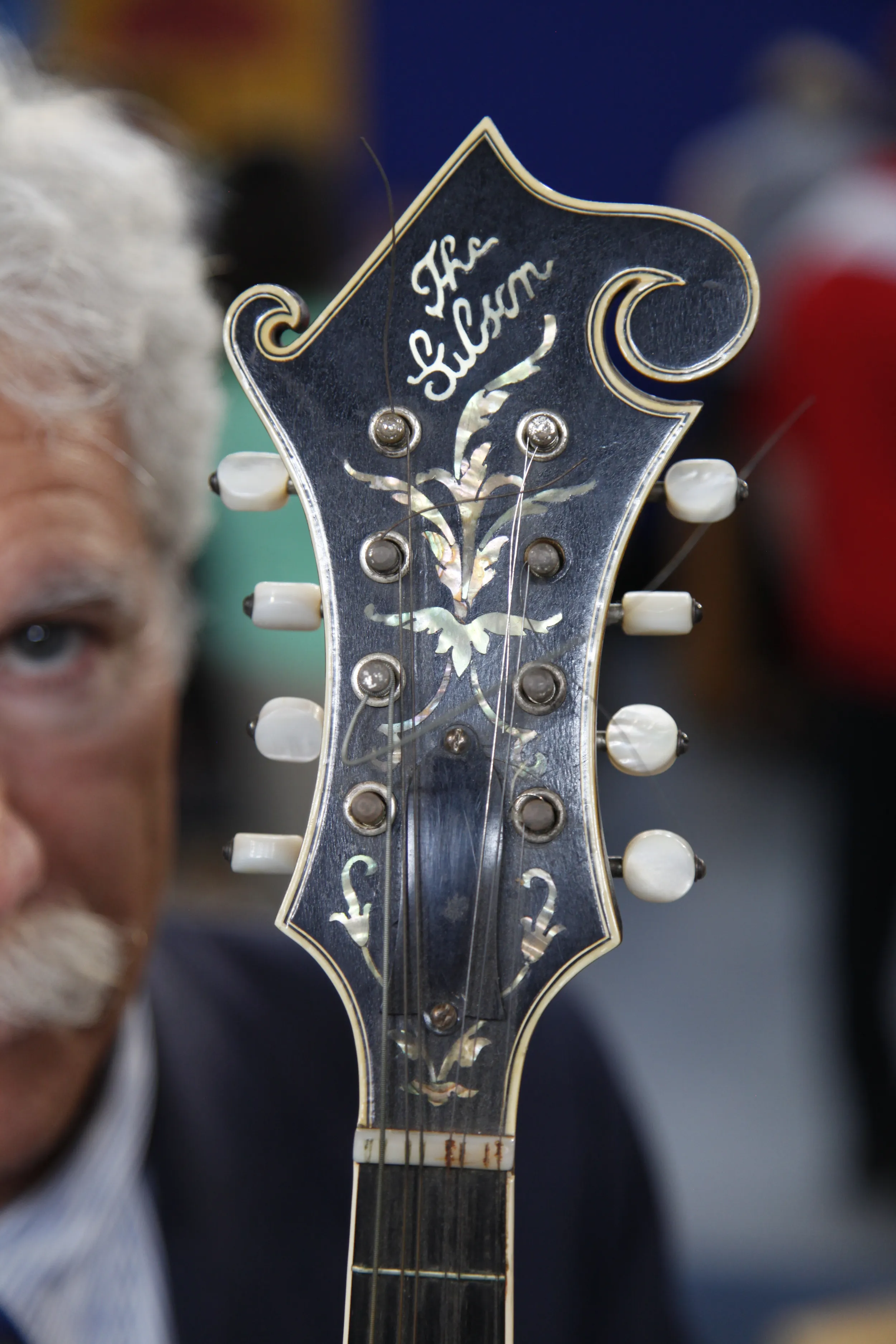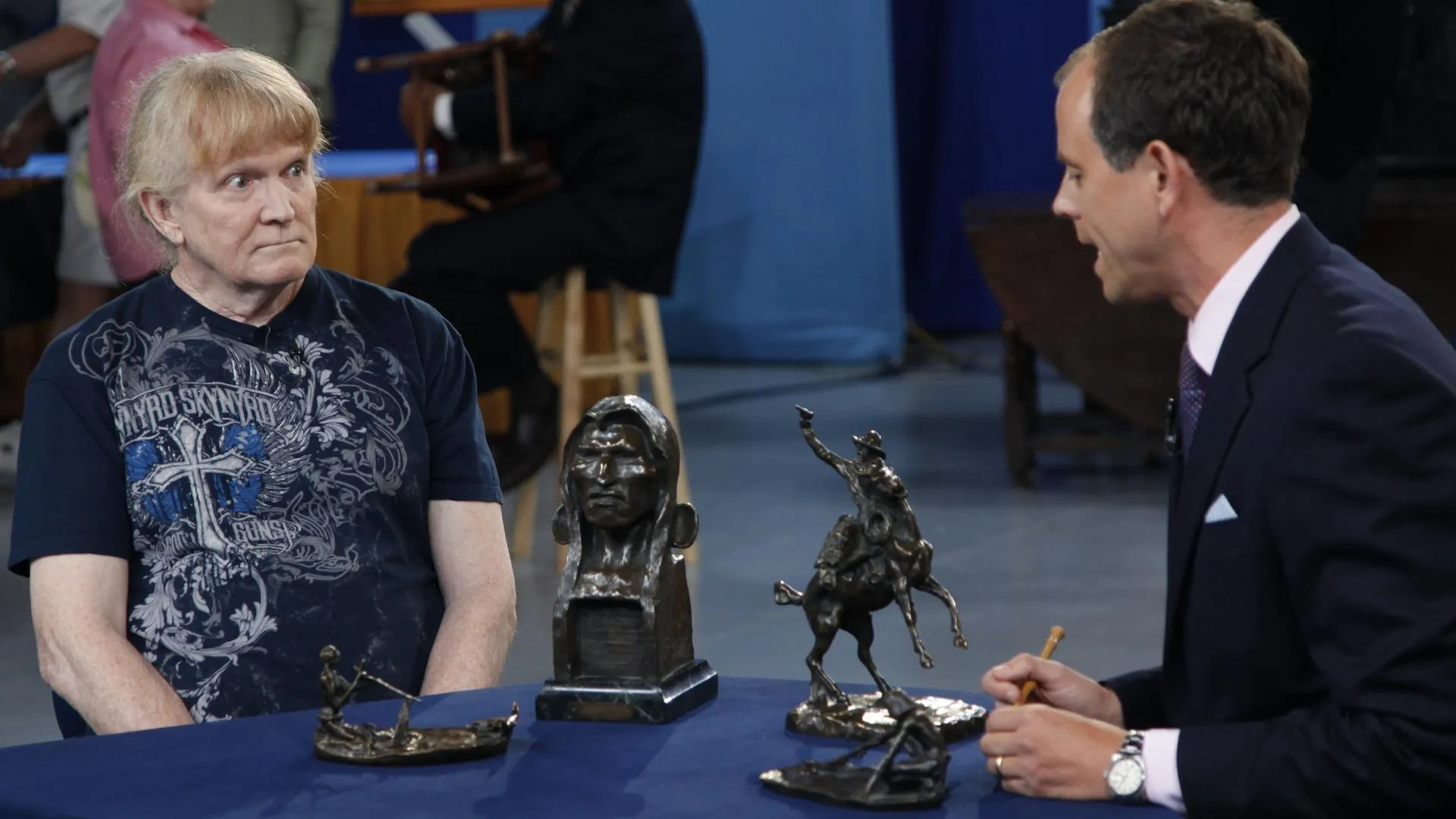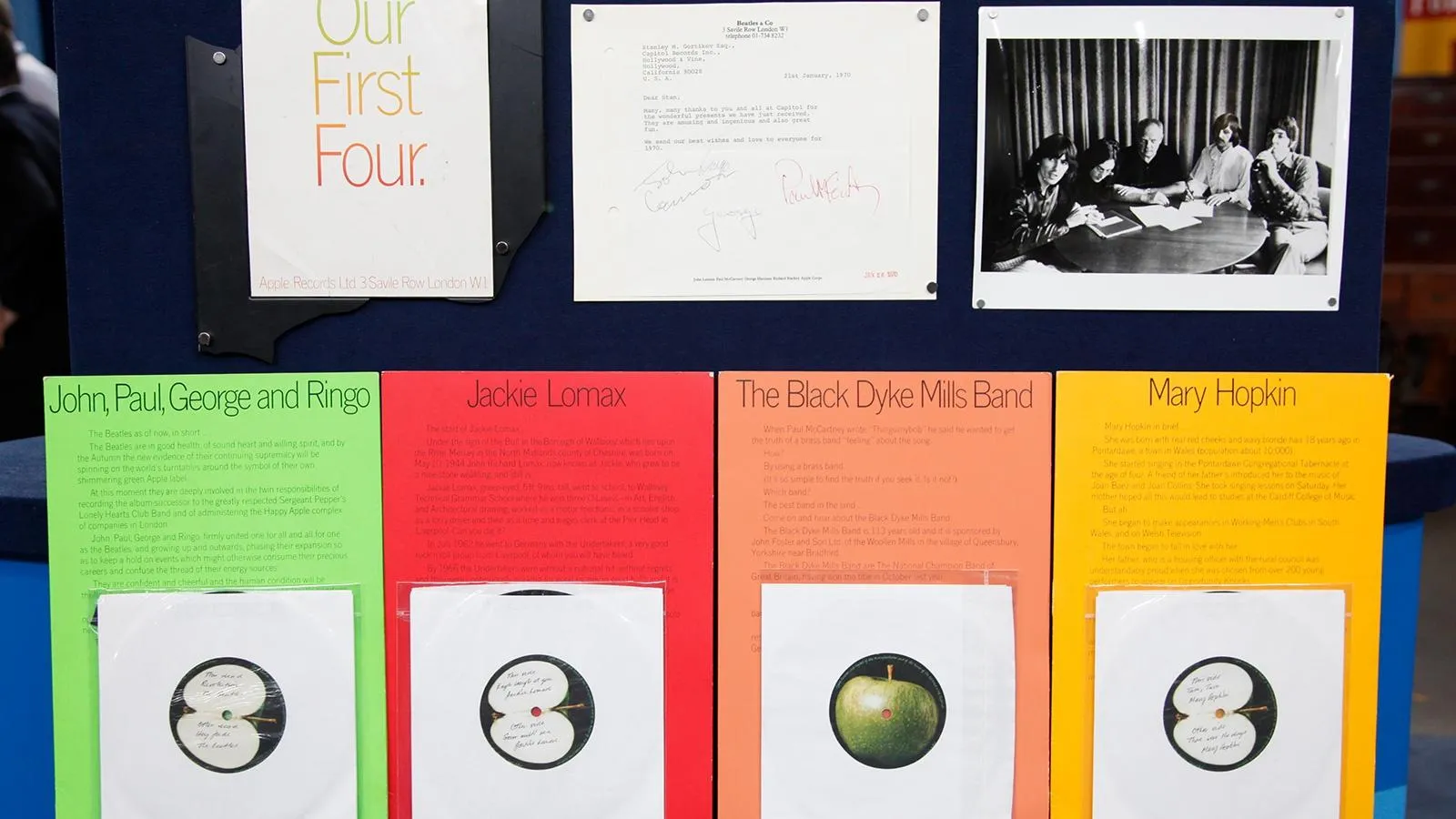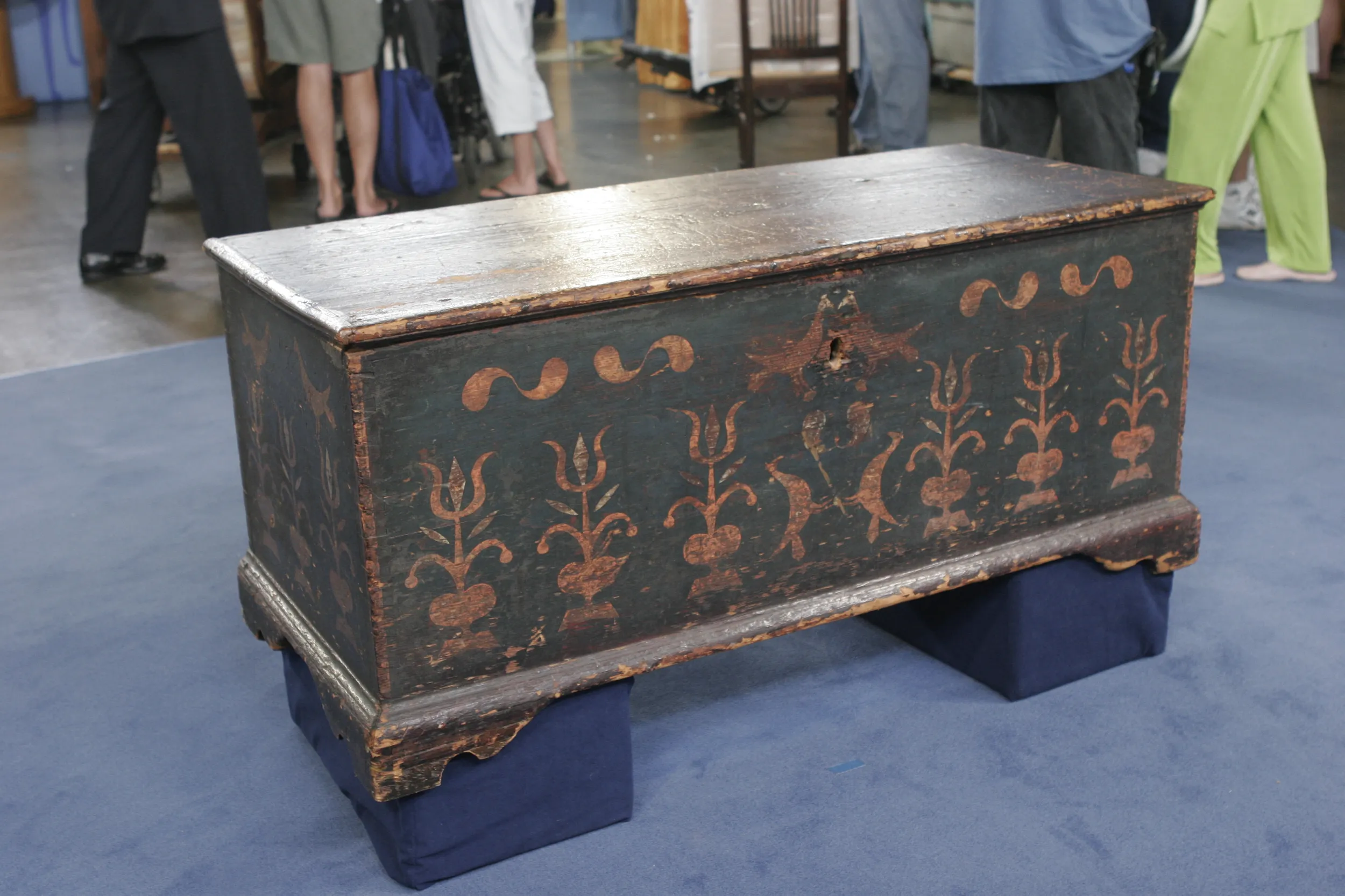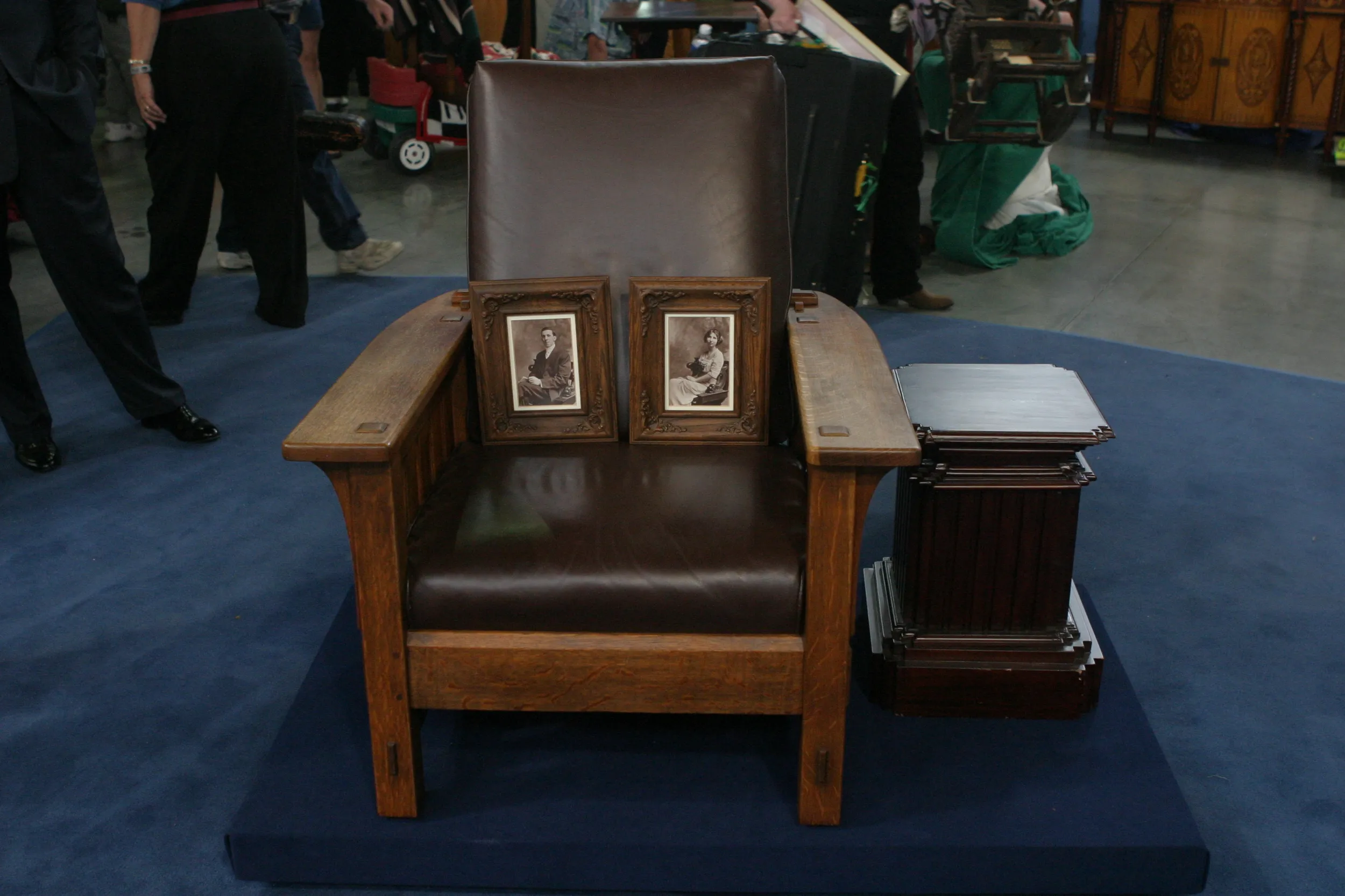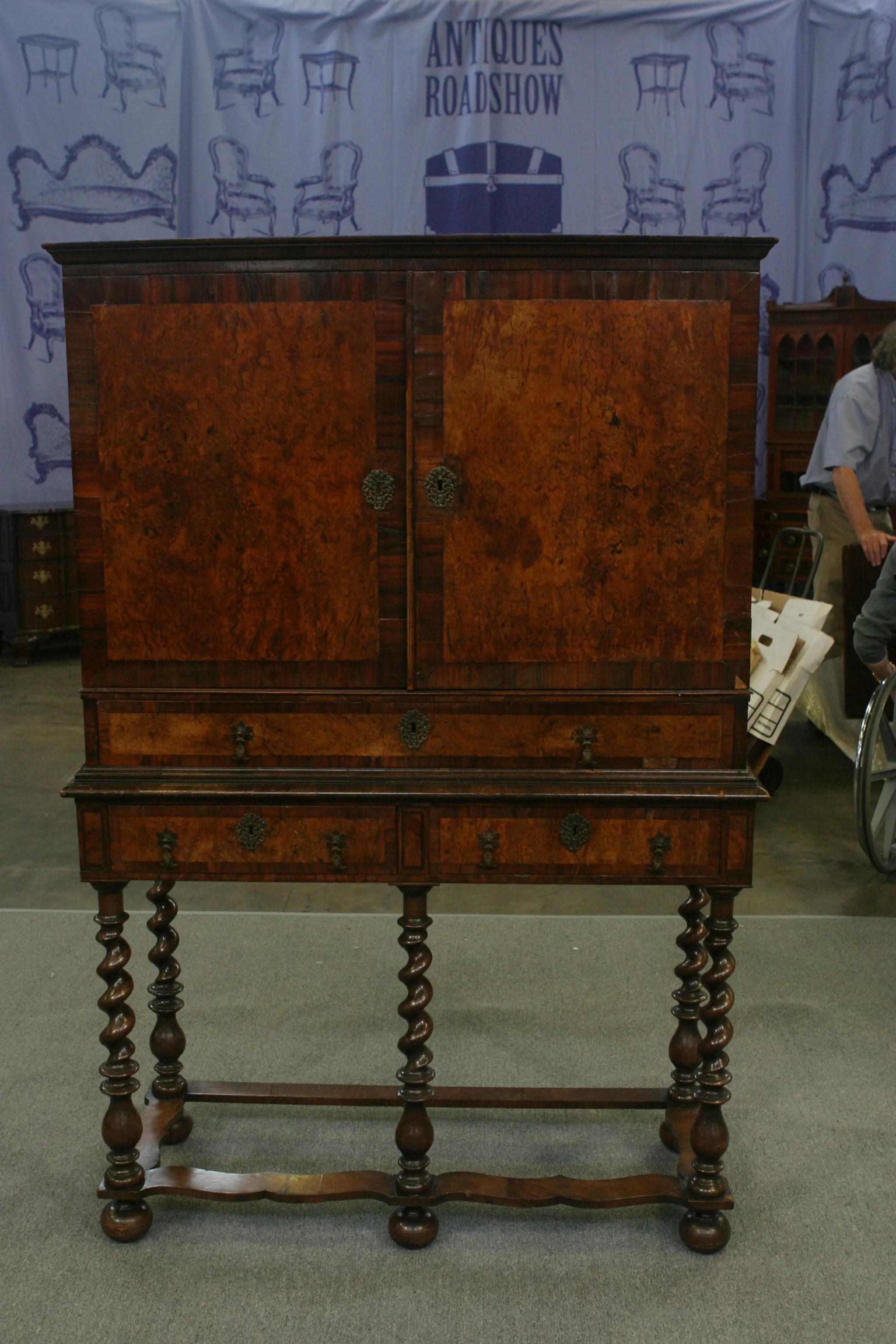GUEST: It was purchased by my great-grandfather during the Depression. He purchased it from, I believe, a neighbor who at the time needed some extra money, and he wanted his son, my grandfather, to learn how to play a musical instrument.
APPRAISER: Well, when you walked in with this, I saw the case, I went, "Oh, my God, I know what that is."
GUEST: (laughs)
APPRAISER: And I thought, "Well, can it be?" And I opened up the case and there it was, this wonderful Gibson F-5 mandolin. I could tell that it was what we call a Lloyd Loar model F-5 with this fern inlay in the peghead.
GUEST: Okay.
APPRAISER: Lloyd Loar was an acoustic engineer and great mandolin virtuoso who worked at the Gibson company...
GUEST: Okay.
APPRAISER: ...back in the teens and '20s. And he really was the father of the modern mandolin.
GUEST: Okay.
APPRAISER: And what he did to make the mandolin what it is today is, he, he did various things to it like, internally, it has parallel tone bars.
GUEST: Okay.
APPRAISER: It has an elevated fingerboard, elevated over the body. It has two F holes, like a violin, and actually, similar to a violin, it has the bridge positioned around the center of the body, around the center of the arch.
GUEST: Okay.
APPRAISER: And it is arched like a violin and tap-toned, meaning internally tuned. The thicknesses of the plates inside are tuned like a violin.
GUEST: Okay.
APPRAISER: And Loar was the first guy to do this to a mandolin. It also has a longer playing length of the neck. It has 15 frets to the body. Earlier mandolins had shorter necks. Gibson had been making these F-style mandolins from turn of the century on, but this innovation in mandolin making was something that Loar excelled in, and this became the, basically the prototype style for all mandolins to come. It has inside the Gibson label...
GUEST: Yes.
APPRAISER: ...with serial number. As well, on the other side, it's got the master model label. Now, this was the professional, master-grade mandolin that Gibson put out late 1922...
GUEST: Okay.
APPRAISER: ...and onwards. And these early ones, the ones made while Loar was at the factory from late 1922 through 1924, we call them Lloyd Loar model F-5s.
GUEST: Okay.
APPRAISER: This has the most beautiful what they call Cremona brown sunburst color to it. If I had to grade it in Gibson mandolins, Lloyd Loar
mandolins, I'd probably put it at the top ten percent of the ones I've seen.
GUEST: Wow.
APPRAISER: When did he buy it again?
GUEST: Um, it-- during the Great Depression. From what I understand, he paid $20 for it, and at the time, you know, it was estimated probably around $600 is what I'm told.
APPRAISER: Right. I would say, these days, a correct asking price through a dealer in a shop would be about $175,000.
GUEST: Oh, my gosh! (laughs) Wow! It's been in a closet in a farmhouse for many, many years. (laughs)

